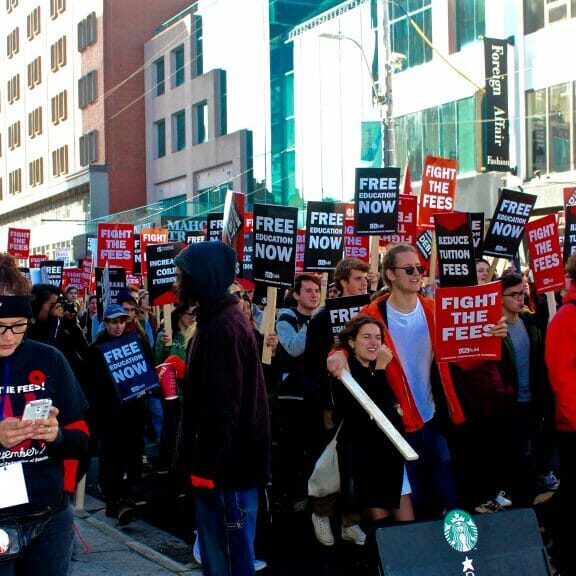
All Out: the photo that defined a moment in the students’ protest
When confronted with inequality during the protest, students' actions didn't match up with their words
There were a lot of positive aspects of today’s student protest to end tuition fees for university, but to me, the photo above says a thousand words.
The students’ chant at the time was something along the lines of, “Drop our fees, we’re sick of mac n’ cheese,” as the group passed a young man shivering in a fleece sweater, empty Tim’s cup in hand, asking for spare change for food.
The contrast of students complaining about eating KD, and the young man begging for something to eat, turned my stomach.
I thought I would catch a moment of a student offering change, maybe even just a hug, but I saw nothing. I watched nearly 500 students who were marching for social equality turn a blind eye to a young person right in front of them, who is one of the most vulnerable victims of our society’s economic inequality.
It made it difficult to cover the rest of the march because the cheers for equality all seemed very hollow.
There were good practices of including members from the Mi’kmaq community, of recognizing we are on their land, of advocating an end to racism on campuses, but everything just seemed like a play after that.
It was as if organizers knew that cameras were on them, and they were playing to a role and checking all the boxes. When the core of their base had the opportunity to do something small to challenge the inequality they marched against, they shied away.
It’s a shame that when we allow one group to become our loudest members of society that it ultimately causes the most vulnerable, who don’t have a platform or agenda, to become silenced in conversations that should include them.
It’s true: “education is not just for the rich and white,” but students are not the only members in Halifax who are “tired, hungry and poor.” With all of the talk of camaraderie at today’s march, students should recognize that there are many others facing the same issues they are, but with far fewer resources.






